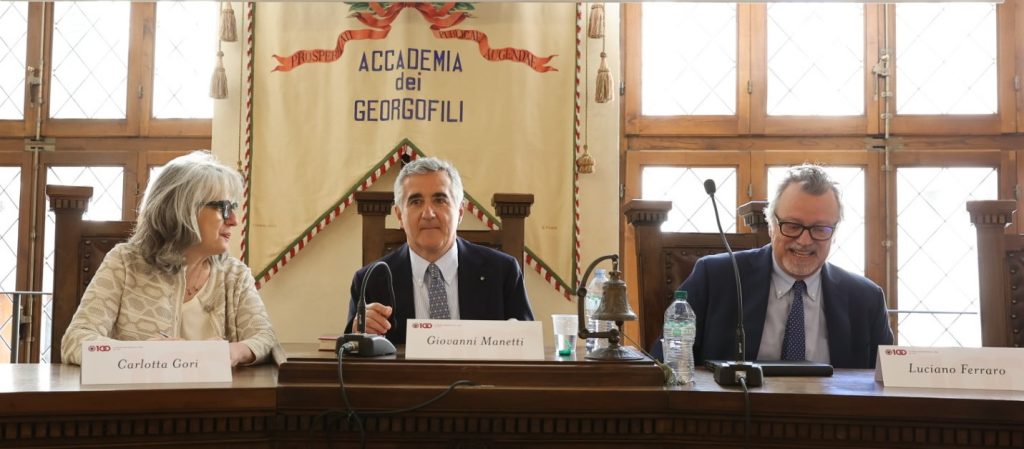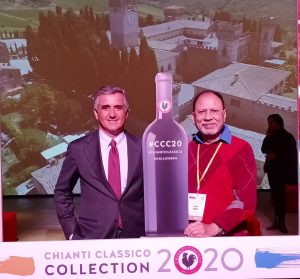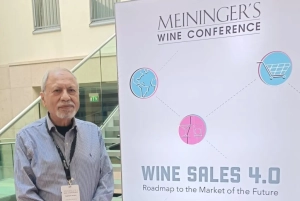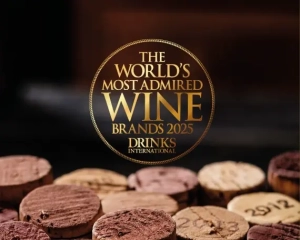
Posted:Wednesday, 15 May 2024 10:20
Chianti Classico Wine Consortium completes 100 years
 The royal decree of 7th March 1924 made possible the establishment of the Consorzio di Tutela, with 33 founding producers seizing the opportunity to protect and preserve Chianti Classico wine, its territory, landscape, and economy. The objective of this Consortium was to promote one of the best-known Made in Italy wine products.
The royal decree of 7th March 1924 made possible the establishment of the Consorzio di Tutela, with 33 founding producers seizing the opportunity to protect and preserve Chianti Classico wine, its territory, landscape, and economy. The objective of this Consortium was to promote one of the best-known Made in Italy wine products.
Work to enhance the value of Chianti Classico continues to this day, ensuring the wine is increasingly appreciated and established in international markets.
The Day marked a century since the signing of the Pact. A conference was held yesterday at Salone dei Cinquecento in the historical Palazzo Vecchio in Florence. Among the topics discussed were the intrinsic link between Chianti Classico wines, its land, the cultural landscape and sustainability. Alongside regional and local institutions, speakers included scientific experts and representatives of other significant denominations like Champagne, Port, Barolo, Burgundy and Oregon.
President of the Consorzio Giovanni Manetti commented, “We have waited until now to tackle the very topical subject of sustainability as a Consorzio so that it has its own distinct character and a specific identity in line with the distinct features of our denomination and its regional production which can be highlighted and promoted. This is a manifesto that we are certain our winegrowers will welcome and bring to fruition until such time that it becomes an embedded commitment to the sustainability of our region and its production”.
As he asserted and many Indian wine tourists to Tuscany often exclaim to Arora and delWine, Chianti Classico is one of the most beautiful areas of Tuscany and perhaps in the world. The producers strive to convey this ethereal beauty through their wines as well, in line with the famous concept of terroir giving wine its character.
The terroir-based Chianti Classico is in a small territory of Tuscany stretching from Florence to Siena and has 9 sub-zones, each known for its own terroir. These sub zones are in the provinces of Florence (FL) and Siena (SI)-going North to South:
| 1. | San Casciano Val di Pesa (FL) | |
| 2. | Greve in Chianti (FL) | |
| 3. | Tavarnelle Val di Pesa (FL) | |
| 4. | Barberino Val d’Elsa (FL) | |
| 5. | Poggibonsi (SI) | |
| 6. | Castellina in Chianti (SI) | |
| 7. | Radda in Chianti (SI) | |
| 8. | Gaiole in Chianti (SI) | |
| 9. | Castelnuovo Berardenga (SI) (a part of) |
The Consorzio Vini Chianti Classico continues to drive forward the hundred-year-old inspirations of the founders- unity of purpose and identity. Ten years ago, 90 years after its existence, it rolled out Gran Selezione the highest quality, with effect from the 2014 vintage. Christened as Chianti Classico Gran Selezione, this wine dares to compare and compete with the likes of Brunello di Montalcino, the famous wine from Montalcino and also Vino Nobile di Montepulciano, if one does not consider include some of the top IGT wines, known as Super Tuscans like Sassicaia (now DOC Sassicaia). Tignanello and Ornellaia.
Since July last year, the producers of Gran Selezione were legally allowed to add to the label one of the 11 named Additional Geographical Units (a specific delimited area with homogeneous characteristics). The 11 Chianti Classico UGAs, or ‘Additional Geographical Units’, that can appear on Gran Selezione labels are Castellina, Castelnuovo Berardenga, Gaiole, Greve, Lamole, Montefioralle, Panzano, Radda, San Casciano, San Donato in Poggio, and Vagliagli.
The makers of the original Chianti founded Consorzio per la tutela del vino tipico del Chianti e della sua marca di origine (Consortium for the Protection of Chianti Wine and its Origin) in 1924. They chose Gallo Nero (Black Rooster) as their trademark. In 1932 a specific ministerial decree was issued to distinguish Chianti in this zone by adding the adjective Classico. Since then, Chianti wine produced outside the Chianti Classico geographical area has been called Chianti docg.
 Carlotta Gori, director of the Consorzio seated beside Manetti, conceded it was an ambitious project, ‘which cites the cultural heritage of the region at the core of Chianti Classico’s vinous identity. While it intensifies its sense of place and regionality, it is also inclusive, allowing regional sustainability to grow collectively along a timeline which may be interpreted by the winegrowers in line with the path the Consorzio wants to forge.
Carlotta Gori, director of the Consorzio seated beside Manetti, conceded it was an ambitious project, ‘which cites the cultural heritage of the region at the core of Chianti Classico’s vinous identity. While it intensifies its sense of place and regionality, it is also inclusive, allowing regional sustainability to grow collectively along a timeline which may be interpreted by the winegrowers in line with the path the Consorzio wants to forge.
Giving due recognition to the celebrations, Delhi Wine Club, India’s most prestigious wine club established in Delhi in 2002, selected Valiano 638 Gran Selezione, possibly the first Gran Selezione imported into India 5 years ago, at the 320th wine dinner organised at The Grand in Delhi on 10 May, when Arora talked about this historic occasion and the wine which being the 5th wine and served with the main course, was cherished by the full house.
Viva Chianti Classico! Viva Chianti Classico Gran Selezione!!
Also Read : Unità Geografiche Aggiuntive (UGA) approved for Chianti Classico Gran Selezione
Subhash Arora




